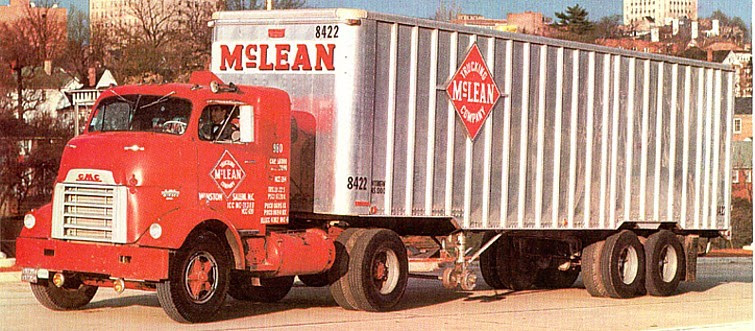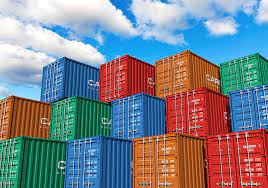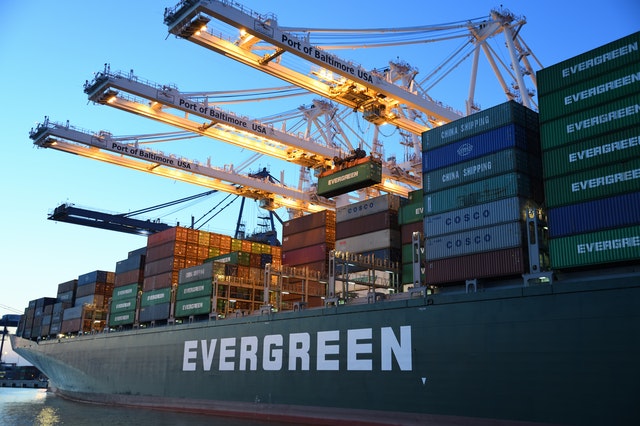Unsung Heroes – Malcolm Mclean & Containerization

Malcolm Mclean changed the transportation business by spearheading the usage of containers increasing effeciences.
Malcolm Purcell McLean was born in Maxton, North Carolina, in 1913.
The son of a farmer, he knew the positives of hard work. Since he was poor, he could not educate himself and instead worked at a gas station in rural North Carolina.
Here he discovered he could make $5 each load, hauling gas to his station. He had saved enough money at the age of 21 to purchase a second-hand vehicle. He acquired a truck and started a trucking firm with his brother Jim and sister Clara.
McLean Trucking Co. started operations in 1934.
Starting in the Mid-Atlantic, and expanding rapidly, the business focused on transporting empty tobacco barrels, livestock feed, and produce.
More than two years after he started, Malcolm transported a shipment from the south to the New Jersey ports for export. The story has it, that as he watched the Stevedores carefully unload his truck bale by bale and load the ship, he wished for a day when the entire truck trailer could be hauled onto the deck in one action. It was fulfilled, but 20 years later.
Malcolm was aggressive and innovative. By 1945, he had 162 trucks. Soldiers who had served in WWII were eligible for special loans to purchase vehicles, especially trucks. Malcolm leveraged that and he gave them haulage contracts as independent operators, allowing him to profit from the finance offers in a roundabout way. Between 1947 and 1949, he added 600 additional vehicles to his fleet in this manner.
In those days, certain committees governed trucking. They had control over pricing, what was transported, from where to where, etc., all in the name of fair competition. All this resulted in inefficiencies which Mclean tackled through various means.
Being smart and shrewd, Mclean Trucking became the 8th largest trucker in turnover but 3rd in profits.

But his vision for the future extended well beyond trucking.
McLean devised a standardized truck trailer that could be loaded and stacked onto ships and railways with ease.
“Containerized cargo,” he believed, would be the future of transportation and logistics.
In 1955, he attempted to purchase Waterman Steamship, a freight and passenger business with docking rights in major port towns, to broaden his reach.
However, when railroad officials tried to stop the purchase on antitrust grounds, McLean was forced to make a choice. He decided to put his faith in himself and his great idea. After selling his interest in McLean Trucking for $6 million (about $58 million today), he used the money to buy Waterman.
He renamed it Sea-Land Industries.
Realizing that oil tankers travelled with empty top decks, in 1956, he purchased two World War II tankers and retrofitted them with a steel deck to carry his newly designed standardized containers.
One of them, the SS Ideal X set sail on its maiden voyage in April 1956, carrying 58 of McLean’s containers from New Jersey to Houston.
The idea of a container was not new. In 1929, ships took railcars to Cuba, and the military had experimented with small containers during WW II. But given the bureaucracy, and all other impediments, the idea had not worked at that time.
Walter Wriston, a junior banker at First National City Bank of New York (now Citibank/ Citicorp), agreed to lend $22 million to fund the purchase of Waterman, but his supervisors rejected the proposal as too risky. “He may only be a trainee, but he’s going to be the boss of both of you very soon,” McLean said of Wriston when he went to the bosses to make his case. He was approved for the loan. And sure enough, Wriston went onto become the CEO at Citi
McLean’s masterstroke was to not patent the container and insisted that the technology be made available to the entire industry, including all his competitors. But they all thought he would fail, that containers would never make it. And how wrong they were. Even the authorities and bureaucracy acceded to him and in fact, New York decided to build a container port in the mid-60s.
In April 1966, in their first transoceanic sailing, Sea-Land sent a ship from Port Elizabeth to Rotterdam. It arrived four weeks faster.
McLean had soon built the single largest cargo shipping business in the world.
Sea-Land was a tremendously lucrative company by the late 1960s. During the Vietnam War, it was crucial in transporting supplies. McLean sold the firm to RJ Reynolds for $500 million in 1969, with $160 million going to him. He became a member of their board of directors, but soon became bored and quit saying “I am a builder, and they are runners”. Sea-Land later changed hands to CSX and then Maersk
Containerization cut shipping and loading expenses by 80% +. Freighters used to spend up to two-thirds of their time loading and unloading in ports. Turnaround times at the port, which were as long as three weeks, were reduced to only 24 hours. While merchandise theft substantially decreased, once the commodities were sealed away out of sight, undisturbed by human hands from point of origin to point of destination. Containers have also replaced many warehouses; they are now their warehouses, and retired containers are being repurposed to construct human homes.
Mclean returned to container shipping in 1978, collecting $1.2 billion for 12 super-sized “Econoships” each capable of carrying over 2,000 TEUs (TEU = Twenty-foot Equivalent Units; containers are either 20-foot or 40-foot). Giant ships would circle the world near the equator, with smaller ships loading and unloading the giants.
But things did not work out. Falling oil prices harmed his competitive edge, and pricing wars in the shipping industry erupted. McLean’s innovative concept culminated in one of the largest bankruptcies in history in 1986, when he was 73 years old.
He died in 2001
Further Readings – a) The best book that tells this story is: The Box: How the Shipping Container Made the World Smaller and the World Economy Bigger.
b) Box Boats: How Container Ships Changed the World





